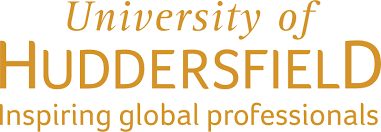CFP: Spaces of Dancing. Edited by Ben Assiter
CFP: Spaces of Dancing
Special edition of Dancecult: Journal of Electronic Dance Music Culture
Edited by Ben Assiter
With the dance floor at its core, space is of critical importance to electronic music and dance culture (EMDC). The dance floor is a unique social space, produced through sound, bodies, and an array of sensory and spatial technologies. The spaces of EMDC—including nightclubs and informal, repurposed venues—shape its development and historical imaginary as much as the DJs and producers of the music. EMDC is also closely entangled within wider dynamics of urban (and rural) space, in which conflicts over noise, disorder, and cultural value mediate the production of nightlife scenes.
This special issue of Dancecult seeks to explore the diverse relations between space and EMDC. The moment for this research is opportune: when COVID-19 led to the closure of nightclubs and music venues worldwide, dance music communities were forced to renegotiate their relationships to space. Virtual spaces emerged, using digital technology to replicate and transform the co-present intimacies of the dancefloor. With the events economy on hold, venues had to reinvent themselves, and find ways to communicate their public value for government support schemes. Prior to the pandemic, questions around EMDC and space had already entered public and academic discourse. In the 2000s and 2010s, many urban nightlife scenes experienced a series of spatialised pressures, in part contributing toward the emergence of new modes of night time governance, including the introduction of night mayors. Within dance music communities, conversations took place around access and the production of safe(r) spaces, invigorating debates around dance music’s historical and ongoing significance for marginalised groups, which complicate the fragile utopianism of the dance floor.
Existing research has tended to focus on specific spatial issues in EMDC, but there have been few attempts to combine a diversity of approaches, which conceive of space at multiple, overlapping scales. This issue seeks to encourage dialogue between researchers of EMDC; urban planners and architects; as well as EMDC practitioners and those involved in the organisation of spaces and events.
// SUGGESTED THEMES //
- The social space of the dance floor
- Dance music and spatial technologies (e.g. sound, lighting, drugs)
- Sound systems, acoustics, and space
- Safe(r) spaces
- Space and accessibility
- Nightclub architecture and design
- Histories of spaces and venues
- Spaces and marginalised communities
- Venues during and after COVID-19
- Shifts from physical to digital/virtual space
- Ephemeral and temporary spaces
- Club culture and urban politics
- EMDC and night time governance
- Nightlife spaces, organising, and activism
- Gentrification with and against urban nightlife
- Electronic music scenes and cities
- Nightlife and urban heritage
- EMDC and rural environments
// SUBMISSIONS //
Feature Articles will be peer-reviewed and are 6000–9000 words in length (including endnotes, captions and bibliography). For policies, see: https://dj.dancecult.net/index.php/dancecult/section-policies
From the Floor (FTF) articles. The issue will include a themed From the Floor Section hosting imaginative submissions reviewed by the guest editor. As Dancecult policy stipulates: FTF submissions include field reports, mini-ethnographies, photo-essays and interviews. Pieces for this section should be between 750-2500 words in length. Rather than written in the style of an article with formal analysis and many citations, FTF pieces are more conversational or blog-like in style, and may consist of experimental and creative reportage styles across the field of electronic dance music. They may include substantive multimedia components and for this special issue on space, creative visual and sonic explorations of the theme are encouraged. We welcome FTF submissions in accordance with the schedule below
Articles must adhere to all style and formatting rules stipulated in the Dancecult Style Guide (DSG). Download it here:
https://dancecult-research.net/Dancecult-Styleguide.pdf
Multimedia Submissions: Dancecult encourages authors to complement their written work with audio and visual material. See the DSG for style and formatting requirements.
// DATES AND DEADLINES //
This special edition is proposed for publication in Dancecult in November 2024.
If interested, send a 250-word abstract (along with a one hundred word maximum author biography) to the editor by 15 April 2023. Please send abstracts for feature article and From the Floor submissions to Ben Assiter: B.Assiter@gold.ac.uk
If your abstract is accepted, the deadline for submission of a full article draft to the guest editor for comments is 15 October 2023. If the full draft article is accepted, the deadline for online submission of your full article to Dancecult (for blind peer-review) is 1 March 2024.
Please send enquiries and expressions of interest to Ben Assiter: B.Assiter@gold.ac.uk
Editor biography
Ben Assiter is a PhD student and Associate Lecturer in the music department at Goldsmiths, University of London. His research focuses on London’s electronic dance music scenes and spaces, exploring their relationship to contested notions of the night time as cultural territory, economic category, and site of urban governance. He has published articles in Annals of Leisure Research, Riffs, and Dancecult – to which he has also contributed as an Associate Editor. Ben is active in London’s electronic dance music scenes as a DJ and producer, and performs internationally as touring drummer with the recording artist James Blake.





